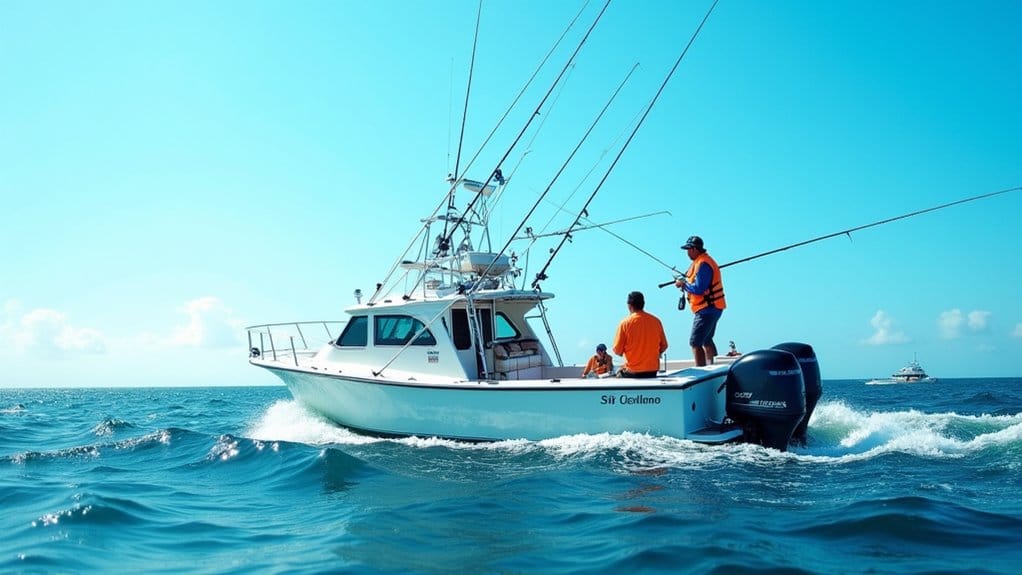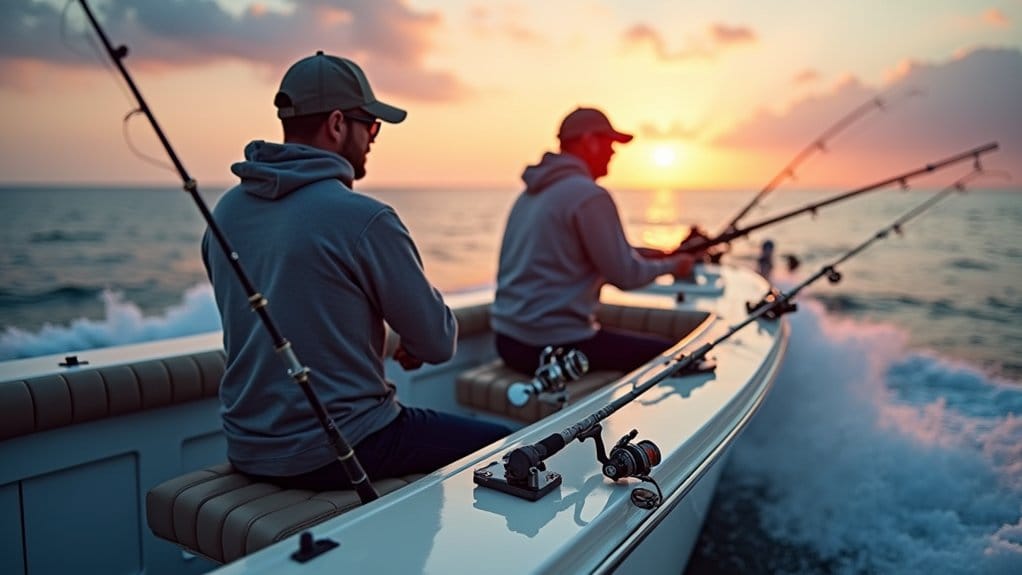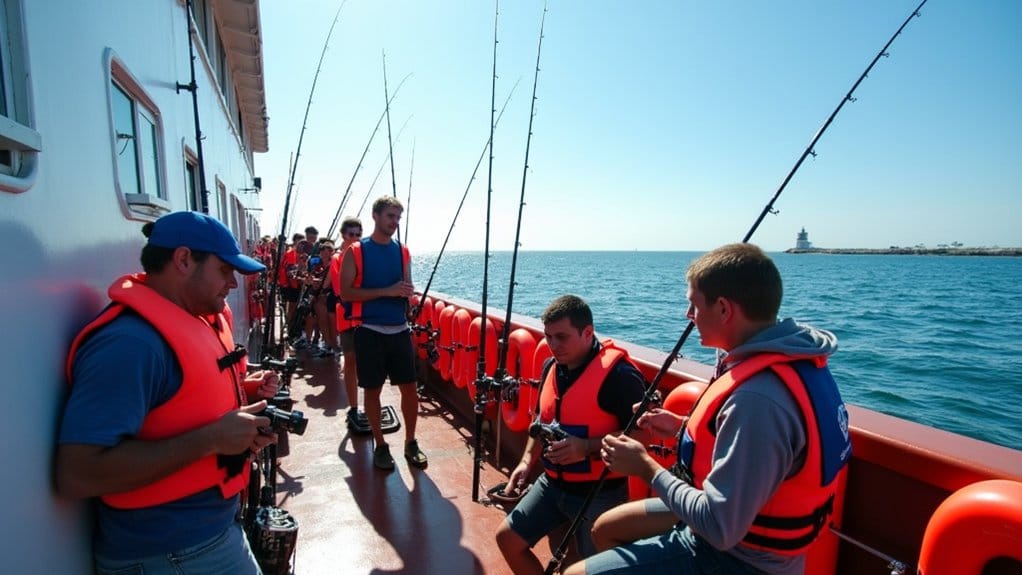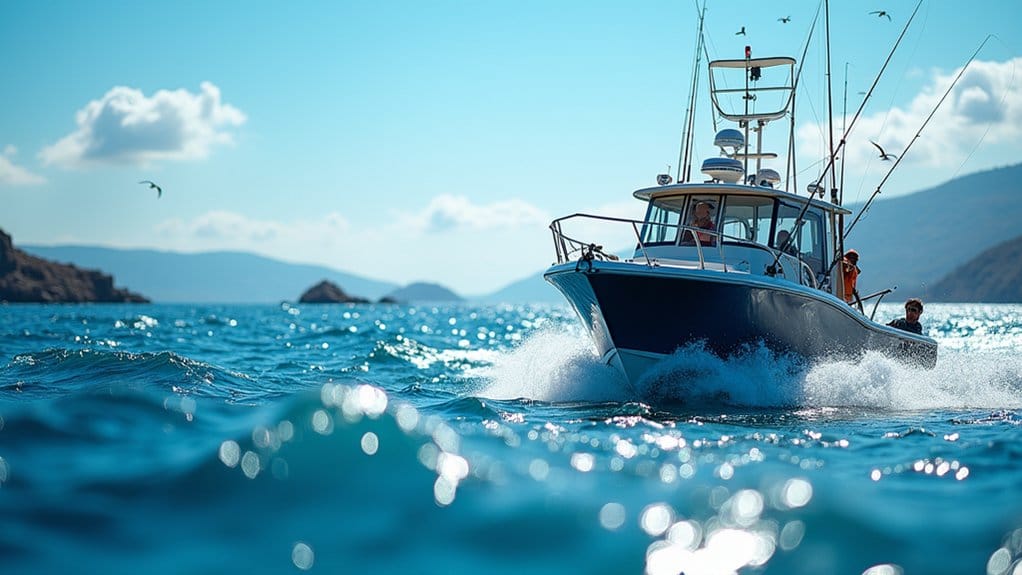Beginner’s Guide to Offshore Fishing Techniques
If you're new to offshore fishing, you might feel overwhelmed by the techniques and equipment involved. However, with the right approach, you can quickly improve your skills and enjoy the thrill of the catch. From trolling to deep-dropping, knowing where to start can make all the difference. Let's explore some essential methods and tips that can enhance your experience and boost your success on the water.
Understanding Offshore Fishing Basics

When you venture into offshore fishing, you're stepping into a world where the thrill of the catch meets the vastness of the sea. Offshore fishing, or deep-sea fishing, typically occurs beyond 30 meters deep, often starting around nine miles from shore.
You'll target larger species like marlin and tuna using various fishing techniques such as trolling, jigging, and deep-dropping. Each method depends on your target fish and environmental conditions.
Your fishing experience requires extensive planning, as trips can last from 6 to 12 hours or even up to three days. Don't forget safety precautions—having functional safety gear and communication devices is vital.
Plus, understanding local fishing regulations is essential for compliance and conservation practices.
Essential Equipment for Beginners

Getting started with offshore fishing requires the right gear to guarantee a successful and enjoyable experience.
Begin with a basic rod and reel combo, ideally a spinning rod between 7-9 feet long. This length offers versatility for different fishing methods. A fixed spool reel is user-friendly, reducing the risk of line tangling—a must for beginners.
Essential tackle includes a selection of hooks, weights, and lures tailored to your target species.
Don't forget safety equipment! Always have life jackets, a first aid kit, and a reliable VHF radio on board. Additionally, carry a spare spool of line and long-nosed pliers to handle fish and address gear malfunctions.
With the right equipment, you'll be well-prepared to catch fish and enjoy your offshore adventure!
Effective Fishing Techniques

To maximize your success while offshore fishing, mastering effective techniques is essential.
Start with trolling, where you drag lures behind your boat to attract species like tuna and marlin. If you're aiming for bottom dwellers, deep-dropping is your go-to; use heavy weights to target blueline and golden tilefish at depths around 300 feet.
When hunting for mahi, keep an eye out for floating debris or weedlines, and switch to spinning gear for quick bailing. Anchoring over wrecks can yield sea bass and tog, while drifting nearby is fantastic for flounder.
Finally, don't forget to diversify your lures—drone spoons, feathers, and cedar plugs can help you adapt to various fishing spots and conditions.
Happy fishing!
Safety Protocols for Offshore Adventures

Offshore fishing can be thrilling, but it's important to prioritize safety on the water. Always wear a life jacket, ensuring every passenger has access to one for emergencies, as drowning can be fatal.
Equip your boat with essential safety gear, like a functioning EPIRB (Emergency Position Indicating Radio Beacon), flares, a VHF radio, and a first aid kit. Regular maintenance of this equipment is critical; malfunctioning gear can create dangerous situations.
Familiarize yourself with local weather patterns and tide schedules, as sudden changes can affect navigation. Before you head out, establish and file a float plan with a marina or responsible person, detailing your route and expected return time to enhance rescue efficiency in case of an emergency.
Exploring Target Species and Locations

What makes exploring the depths of the ocean so exciting for anglers? The thrill of targeting species like tuna, marlin, mahi-mahi, and wahoo is hard to beat.
These fish are typically found in deeper waters beyond 30 meters, often near underwater structures like reefs and wrecks. The Gulf Stream serves as a migratory highway for many game fish, offering prime fishing spots for larger catches.
Remember that seasonal variations play a significant role in fish availability; mahi-mahi flourish in warmer months, while tuna are more abundant during cooler periods.
To maximize your success, utilize local fishing charts and reports to stay updated on the best times and conditions for targeting specific species in your area.






